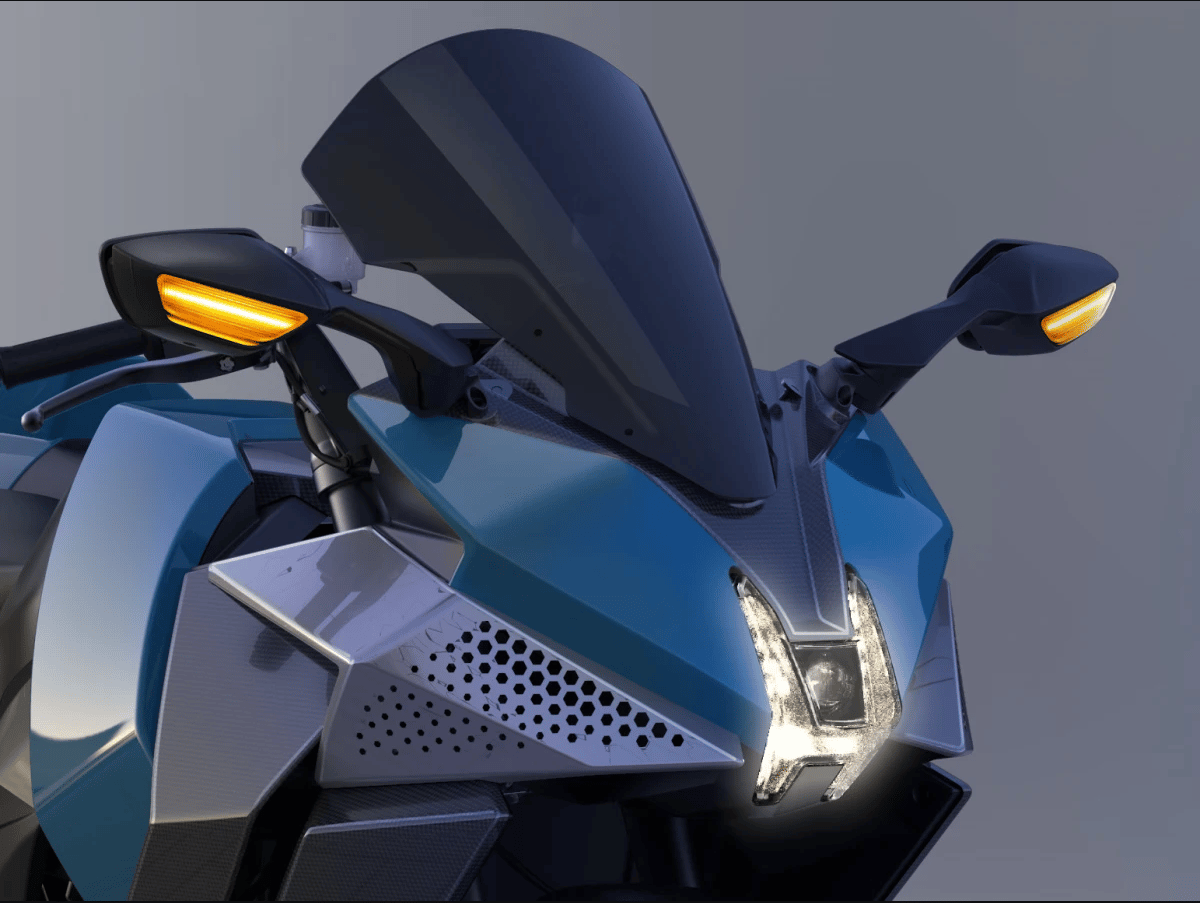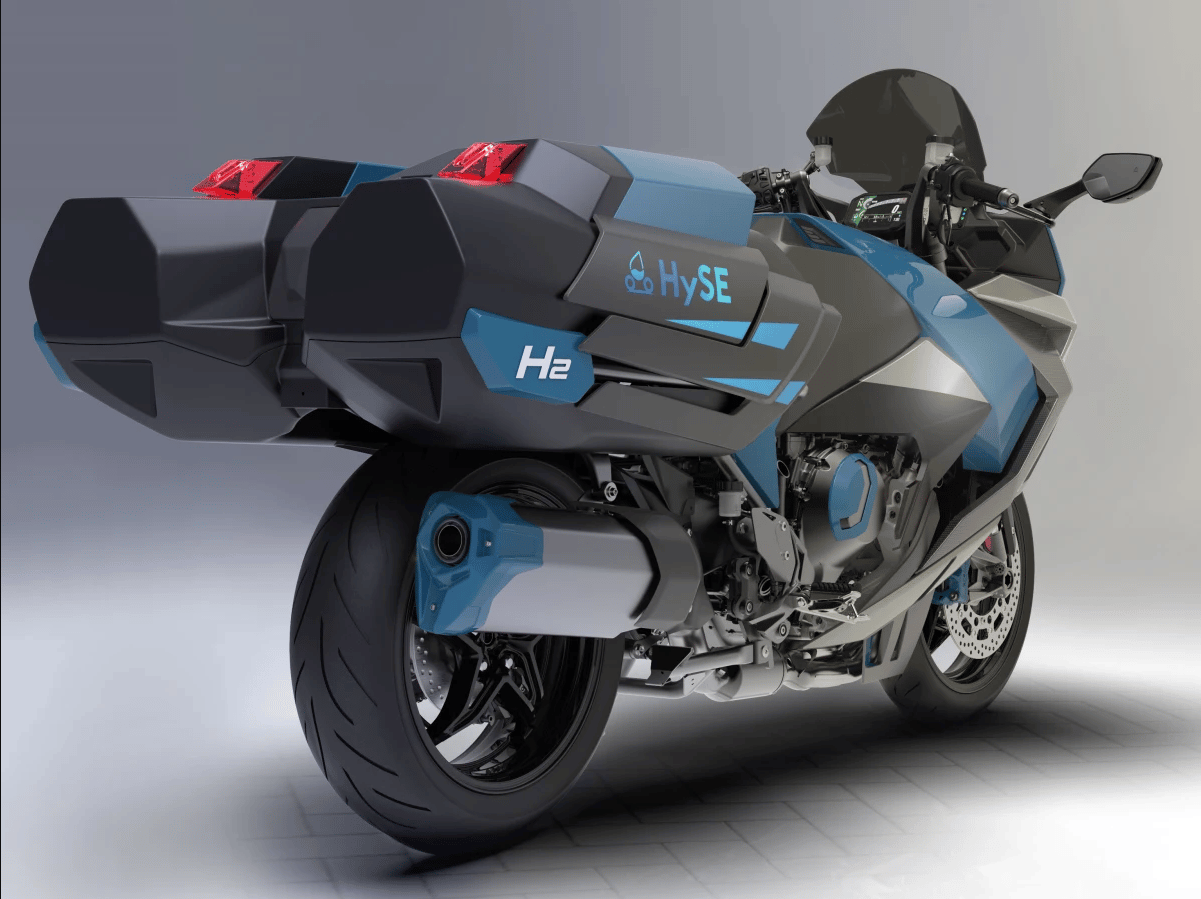Kawasaki is doing some fascinating work toward decarbonizing motorcycles. After launching the world’s first hybrid streetbike in the Ninja 7 Hybrid, it’s now built a supercharged, zero-emissions, hydrogen-powered Ninja H2 SX. An H2 H2, if you will.
Battery-electric powertrains are killing it in the world of four-wheelers; the zero-carbon revolution is well underway in the automotive world. But battery-electric motorcycle still don’t deliver what a lot of recreational bikers want: all-day range at high speeds, fast refueling, and a light and well-concentrated mass that doesn’t make a bike handle like a fat man trying to get off the toilet.
It could be some time before batteries get to an acceptable level, and bikers also tend to enjoy the sound of combustion engines – you may have noticed these hairy creatures playing you the subtle songs of their people, which don’t tend to coexist well with curbside conversations or sleeping babies.
So why not hydrogen? It carries more energy per weight than batteries, provided you can deal with the extra space it takes up. You can fill ‘er up real quick at your local hydrogen station – of which, there are admittedly not many at this point, but there may be going forward. And you can either run it through a fuel cell to power quiet, punchy electric motors, or else burn it in a modified combustion engine, allowing you to continue playing the subtle songs of your people well into the zero-carbon future.

Kawasaki
Yes, there are certainly many issues and inconveniences involved. But it’s an option. We’ve seen a few companies take a nibble at this cherry over the years; Intelligent Energy’s ENV from back in 2005, which looked like a two-wheeled version of a Star Wars Battle Droid, and Suzuki’s very cool Crosscage concept from 2008, with dual single-sided swingarms come to mind, as does Segway’s ultra-futuristic Apex H2, from much more recently.
But all of these have been fuel cell electrics. Kawasaki is thinking combustion, which it can, because it’s already got the key building block: the only supercharger in the production motorcycle world, complete with “a 130,000-rpm custom-designed impeller forcing one and a half bathtubs full of air every second into the gaping maw of a 1,000-cc inline-four combustion engine.” I’m quoting myself there, from the video below, in which I first rode the gasoline-powered Kawasaki Ninja H2 and frightened myself dangerously close to orgasm.
Road test: Kawasaki’s wild, supercharged Ninja H2
What’s the connection between superchargers and hydrogen? Well, as our old friend and former colleague Ben Purvis points out over at Cycle World, gasoline uses an air-fuel ratio around 14.7:1, but you need a lot more air – a ratio of at least 34:1 – to run H2 gas in a combustion donk and make useable power. That supercharger can supply air in bulk, making Kawasaki the only motorcycle company positioned to take a stab at a production hydrogen-burner.
So it seems Kawasaki may have had more in mind than a homage to a famous old two-stroke widowmaker in mind when it called its supercharged supertourer the H2. And after showing off concept renders in Milan last year, it’s now made the H2 H2 a reality, and unveiled at the broader Kawasaki Group’s “Group Vision 2030 Progress Report” meeting.
This isn’t just a lightly modified H2 SX; the Japanese company has taken the time to develop some new bodywork for the hydrogen bike, including a cute little H-shaped headlamp. That’s about the only thing cute about this design, mind you; it otherwise looks a lot more bulky and angular than the regular SX, and not in a great way.

Kawasaki
But the key thing to note is the oversized hard panniers; that’s where the hydrogen is stored in high-pressure gas cylinders, five to a side. If it worries you to have a famously explosive gas positioned next to each bum-cheek in the event of a crash, well, car companies have already put hydrogen tanks through crash testing for vehicles like the Toyota Mirai and Hyundai Nexo, and they’ve come up with five-star ratings.
While the Hindenburg looms large every time this gas is discussed, it’s a furphy, as we explained at length when looking at whether hydrogen airships could soon return to the skies. A Sandia National Laboratories report for the US DoE estimates that hydrogen vehicles pose no additional risk in upwards of 98% of confined tunnel crash scenarios, including ones where the hydrogen ignites. In such cases, it vents quickly, sending a thin flame straight upward, and it only explodes at very specific ratios in air. Outside confined tunnels, the gas dissipates quickly upward and is even less likely to cause problems.
So Kawasaki has built the first hydrogen Ninja H2, and will begin testing it next year. We don’t have data yet on practical things like how much hydrogen it’ll carry, how much power it’ll make, how much it’ll weigh or how far it’ll go, which will be very interesting to find out.

Kawasaki
It’s part of a HySE initiative the company has entered into with fellow Japanese motorcycle powerhouses Yamaha, Honda and Suzuki – which also includes the Big Four teaming up on a hydrogen-combustion ATV that’s slated to race at next year’s Dakar Rally.
We wouldn’t expect to see a product in showrooms in the immediate future – even though Japan probably has a higher concentration of hydrogen fuel stations than anywhere else in the world. But we’ll be following this project with interest; if batteries don’t take the 10X leap we’ve all been waiting for for a decade, hydrogen motorcycles could be a lot of fun.
Source: Kawasaki Group
Source of Article